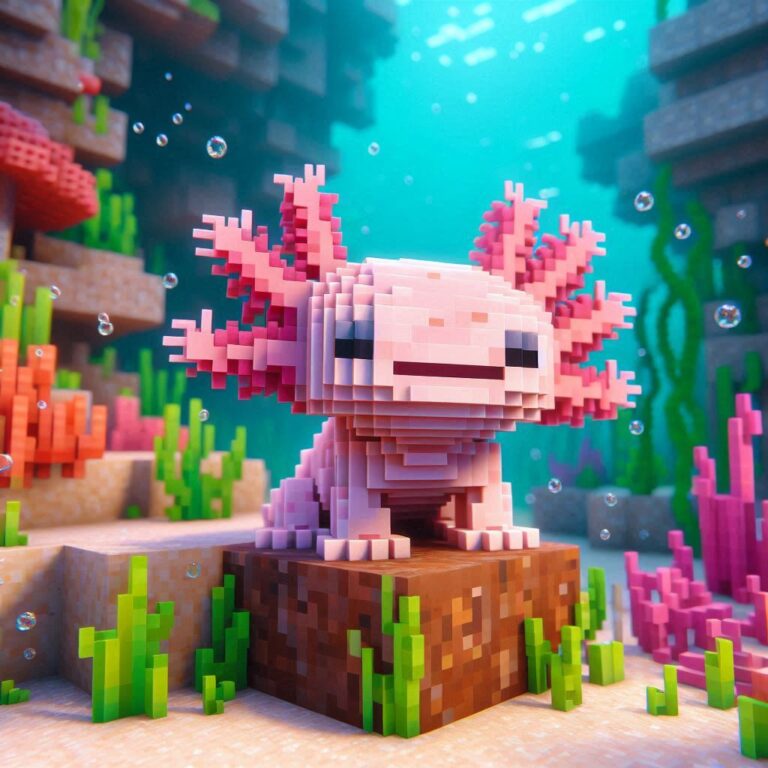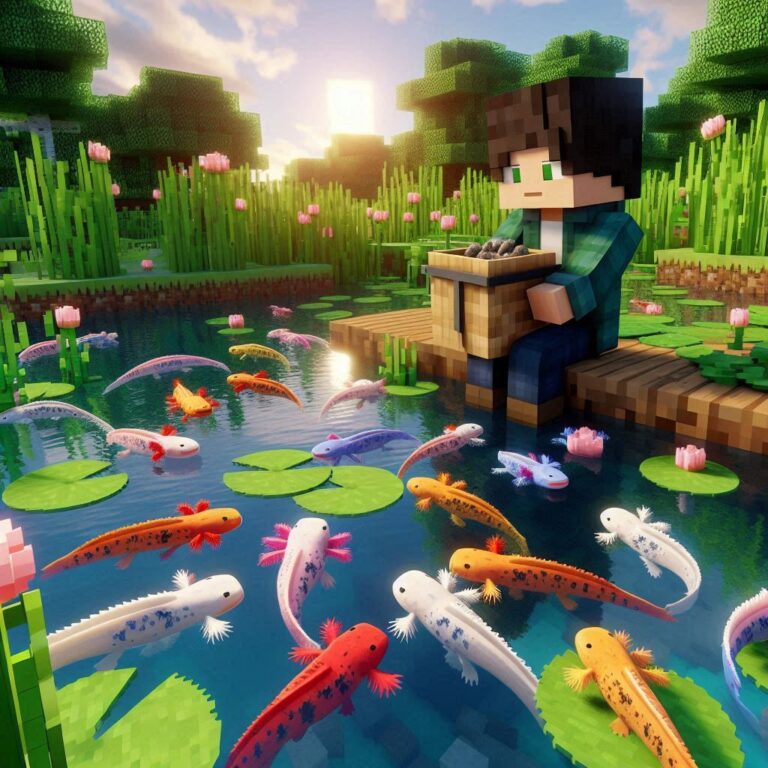
Axolotls are fascinating aquatic creatures known for their remarkable regenerative abilities. Among their distinctive features are the gills, crucial for breathing underwater. If an axolotl’s gills are damaged, various aspects come into play, from regrowth possibilities to reasons behind the damage and proper care.
Do Axolotls Regrow Damaged Gills?
Axolotls, often hailed as nature’s regenerative marvels, indeed possess the extraordinary ability to regrow damaged gills. Unlike most animals, axolotls retain their juvenile characteristics throughout their entire lives, allowing them to undergo remarkable regeneration. When an axolotl’s gills are damaged due to injury or other factors, the regeneration process kicks in. The specialized cells around the damaged area undergo a complex transformation, triggering the development of new gill tissue. This natural regrowth ability is a testament to the axolotl’s incredible adaptability and sets them apart in the animal kingdom.
Natural Regeneration Process
The natural regeneration process of axolotl gills involves a series of intricate cellular events that showcase the species’ exceptional biological capabilities. Upon gill damage, specific cells known as blastemal cells activate, initiating the formation of a regeneration bud. These buds develop into functional gill tissues, gradually restoring the axolotl’s respiratory system. The process involves the coordination of various signaling pathways and gene expressions, highlighting the sophisticated mechanisms at play. Understanding the nuances of this natural regeneration process provides insights not only into axolotl biology but also holds potential implications for regenerative medicine research in humans.
Time Frame for Regeneration
The time frame for axolotl gill regeneration varies depending on multiple factors. Generally, it takes a few weeks to a few months for axolotls to fully regrow their damaged gills. The regeneration speed is influenced by factors such as the extent of damage, the age of the axolotl, and overall environmental conditions. Younger axolotls tend to regenerate more rapidly than their older counterparts. Creating an optimal environment with suitable water quality, temperature, and nutrition can expedite the regeneration process. Patience is key for axolotl enthusiasts, as witnessing the gradual transformation of damaged gills into fully functional respiratory organs is a captivating testament to the wonders of nature and the resilience of these unique aquatic creatures.
Reasons Why Your Axolotl’s Gills are Damaged
Axolotls are renowned for their regenerative abilities, but ensuring the well-being of their gills is paramount to their overall health. Understanding the reasons behind damaged gills is crucial for responsible axolotl care. Environmental stressors and physical injuries are the primary culprits contributing to gill damage in these aquatic creatures. By addressing and mitigating these issues, axolotl enthusiasts can foster a thriving environment for their fascinating pets.
Environmental Stressors
Axolotls are highly sensitive to their surroundings, making environmental stressors a common cause of gill damage. Issues such as poor water quality, sudden changes in temperature, and inadequate tank conditions can adversely affect the delicate gill tissues. High levels of ammonia or nitrites in the water, for example, can irritate the gills and compromise their function. Axolotls thrive in stable aquatic environments, so maintaining proper water parameters and regularly monitoring the tank’s conditions are essential steps in preventing environmental stressors from causing harm.
Physical Injury
Accidents happen, and in the case of axolotls, physical injuries can result in gill damage. Axolotls may inadvertently injure themselves on sharp tank decorations, or tank mates may cause harm during territorial disputes. It’s crucial to provide a carefully designed habitat with smooth substrates and rounded decorations to minimize the risk of physical injuries. Regular observation of axolotls for any signs of distress or injury is essential, allowing owners to promptly address and treat any wounds before they escalate into more significant issues. By creating a safe and enriching environment, axolotl enthusiasts can minimize the risk of physical injuries and contribute to the long-term well-being of their aquatic companions.
How to Take Care of an Axolotl with Damaged Gills
Caring for an axolotl with damaged gills requires a thoughtful and attentive approach to ensure a swift and successful recovery. Understanding the intricacies of their regenerative capabilities is key to providing optimal care during this period. From isolation and quarantine to implementing appropriate medications and treatments, a comprehensive strategy is essential to support the healing process and restore the axolotl’s respiratory function.
Isolation and Quarantine
Isolating an axolotl with damaged gills is a crucial step in its care regimen. This separation serves two primary purposes: preventing potential stress from tank mates and creating a controlled environment for recovery. Stress can impede the regenerative process, so a quiet and undisturbed space is vital. A quarantine tank offers a controlled setting, allowing owners to closely monitor the axolotl’s behavior and administer specific treatments without affecting the main tank’s dynamics. During isolation, maintaining optimal water conditions becomes even more critical to facilitate faster healing.
Medications and Treatments
Selecting the right medications and treatments is pivotal in aiding the recovery of an axolotl with damaged gills. Consultation with a veterinarian well-versed in axolotl care is highly recommended to ensure accurate diagnosis and treatment. Common medications may include antimicrobial agents to prevent infections and promote tissue regeneration. Additionally, salt baths or special gill-healing solutions can be beneficial. Careful attention to dosage and duration is essential, as improper medication use can harm the axolotl. Regular observation and adjustment of the treatment plan based on the axolotl’s response are key components of a successful recovery strategy. By combining isolation, quarantine, and appropriate medical interventions, axolotl enthusiasts can contribute significantly to the healing process and witness the remarkable regenerative abilities of these unique aquatic creatures.
Do Axolotls Live Without Gills?

The prospect of axolotls living without gills might seem counterintuitive, considering their aquatic nature. However, these remarkable creatures possess adaptive mechanisms that allow them to survive even when their gills are damaged or regenerating. While gills are their primary respiratory organs, axolotls can also absorb oxygen through their skin and mouth lining, providing an alternative means of respiration. This fascinating adaptation showcases the resilience of axolotls in adapting to changing circumstances, emphasizing their versatility as aquatic beings.
Adaptations and Survival
Axolotls exhibit extraordinary adaptations that contribute to their survival in various conditions. When faced with gill damage, they adapt by relying on alternative respiratory pathways, primarily through cutaneous respiration. Axolotls possess specialized skin that allows efficient oxygen absorption, ensuring their survival during the gill regeneration process. This adaptability is a testament to the evolutionary prowess of axolotls, showcasing their ability to thrive in diverse environments. It also highlights the importance of maintaining optimal tank conditions to support these adaptive mechanisms.
Long-Term Implications
While axolotls can adapt and survive without fully developed gills, there are potential long-term implications to consider. Although they exhibit remarkable regenerative capabilities, prolonged or repeated damage to the gills may have consequences for an axolotl’s overall health and lifespan. Ensuring a stress-free environment, proper nutrition, and attentive care during the gill regeneration process can mitigate potential negative effects. Axolotl enthusiasts should be mindful of the long-term implications of damaged gills, striving to create conditions that promote not only survival but also a thriving and healthy aquatic lifestyle. Understanding the delicate balance between adaptation and long-term implications is crucial for providing comprehensive care to these captivating aquatic creatures.
FAQs
1. Can axolotls survive with damaged gills?
Answer: Yes, axolotls have the ability to survive with damaged gills, thanks to their regenerative capabilities and alternative breathing methods.
2. How long does it take for axolotls to regrow their gills?
Answer: The regrowth time for axolotl gills varies, but it generally takes a few weeks to a few months, depending on factors like age and overall health.
3. What are common reasons for gill damage in axolotls?
Answer: Environmental stressors, poor water quality, and physical injuries are common reasons behind gill damage in axolotls.
4. Can I use over-the-counter medications to treat axolotl gill damage?
Answer: It is recommended to consult with a veterinarian for appropriate medications, as improper use can harm axolotls.
5. Should I isolate an axolotl with damaged gills from other tank mates?
Answer: Yes, isolating the affected axolotl can prevent further stress and potential harm from tank mates.
6. Do axolotls require special care during the gill regrowth process?
Answer: Yes, providing optimal water conditions, a stress-free environment, and a balanced diet can support axolotls during the gill regrowth process.
7. Can axolotls breathe through their skin if their gills are damaged?
Answer: Yes, axolotls have the ability to absorb oxygen through their skin, providing an alternative means of breathing if their gills are damaged.
8. How can I prevent physical injuries to my axolotl’s gills?
Answer: Ensuring a safe and appropriately furnished tank, free of sharp objects and potential hazards, can help prevent physical injuries to axolotl gills.
9. What is the ideal water temperature for axolotls during gill regeneration?
Answer: Maintaining a water temperature between 16-18 degrees Celsius (60-64 degrees Fahrenheit) is generally suitable for axolotls during gill regeneration.
10. Can axolotls live a normal lifespan without fully developed gills?
Answer: While axolotls can adapt and survive with damaged or regenerating gills, ensuring optimal conditions will contribute to their overall well-being and lifespan.
Conclusion
In conclusion, understanding the intricacies of axolotl care, particularly when it comes to damaged gills, is essential for providing these remarkable aquatic creatures with a thriving environment. The ability of axolotls to regrow damaged gills is a testament to their incredible regenerative capabilities, making them a unique species in the realm of aquatic life. From environmental stressors to physical injuries, various factors can contribute to gill damage, emphasizing the need for attentive and responsible ownership.
Taking care of an axolotl with damaged gills involves a multifaceted approach, encompassing isolation, quarantine, and thoughtful medication and treatment strategies. By creating a stress-free environment, maintaining optimal water conditions, and seeking veterinary guidance when needed, axolotl enthusiasts can actively contribute to the well-being and recovery of their aquatic companions.

Hassan Shah carries over four years of hands-on expertise in caring for axolotls, guided by his cherished companion ‘Little Bruno,’ a thriving axolotl under his attentive care for three years.



